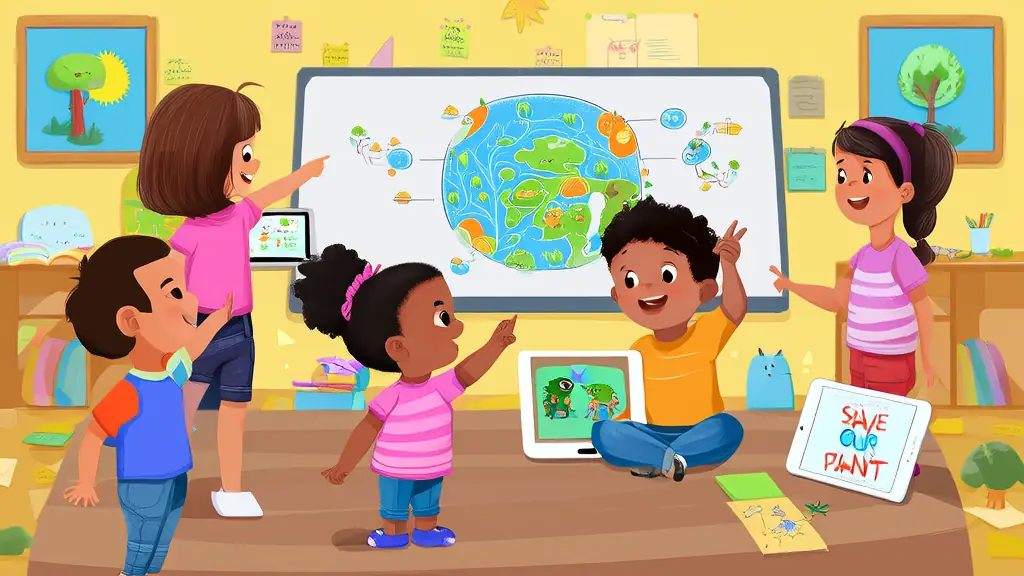
Empowering the Future: Navigating K-12 Education in 2025
Welcome to the ever-evolving world of K-12 education, where each day brings new opportunities and challenges. As we stand on the cusp of significant educational advancements, it's crucial for both parents and educators to stay informed about the latest teaching methodologies, child development insights, and technological trends. This post aims to provide a comprehensive overview, offering practical tips and inspiring success stories that can help shape the future of our children.
The Evolution of Teaching Methodologies
Traditional teaching methods are giving way to more interactive and student-centered approaches. Project-Based Learning (PBL) and Flipped Classrooms are two such methodologies gaining traction. PBL encourages students to tackle real-world problems, fostering critical thinking and collaboration. For example, a high school in California implemented a PBL unit on environmental science, where students designed and presented solutions to local water conservation issues. The results were not only impressive but also deeply engaging for the students.
Flipped Classrooms, on the other hand, invert the traditional learning environment by delivering instructional content online outside of class and moving activities, including those that may have traditionally been considered homework, into the classroom. This approach allows for more personalized attention and hands-on activities during class time. A study from the University of Michigan found that flipped classrooms significantly improved student engagement and performance in math and science subjects.
Child Development Insights and Research
Recent research in child development emphasizes the importance of social-emotional learning (SEL) alongside academic skills. SEL helps students develop self-awareness, self-management, social awareness, relationship skills, and responsible decision-making. Schools that integrate SEL into their curriculum report lower rates of behavioral issues and higher academic achievement. For instance, a program called Second Step has been successfully implemented in over 30,000 schools, helping students build essential life skills.
Additionally, the role of play in early childhood education is being reevaluated. Play-based learning, which involves using games and activities to teach concepts, has been shown to enhance cognitive, physical, and emotional development. In Finland, a country known for its high-performing education system, play-based learning is a cornerstone of early education, contributing to the overall well-being and academic success of students.
Educational Technology Trends
Technology continues to transform the educational landscape, providing new tools and resources for both teachers and students. Artificial Intelligence (AI) and Adaptive Learning Systems are at the forefront of this transformation. AI-powered platforms can analyze student data to provide personalized learning experiences, identifying areas where students need additional support or enrichment. Tools like DreamBox Learning and Khan Academy use adaptive algorithms to tailor content to individual student needs, making learning more effective and engaging.
Another trend is the integration of Augmented Reality (AR) and Virtual Reality (VR) in the classroom. These technologies offer immersive learning experiences, allowing students to explore historical events, scientific phenomena, and even distant planets. For example, the Google Expeditions app provides virtual field trips, enabling students to visit places they might never see in person. This not only enhances understanding but also sparks curiosity and imagination.
Practical Tips for Parents and Teachers
For parents, staying involved in your child's education is key. Attend parent-teacher conferences, volunteer at school, and engage in conversations about what your child is learning. Create a supportive home environment that values education and encourages curiosity. Set aside dedicated time for reading and discussing books, and be open to exploring new topics and interests together.
Teachers can benefit from continuous professional development. Stay updated on the latest research and teaching strategies, and be open to experimenting with new methods. Foster a positive classroom culture that values every student's contributions. Use technology to enhance, not replace, meaningful interactions and hands-on learning. Finally, prioritize communication with parents, keeping them informed and involved in their child's educational journey.
Success Stories and Case Studies
One inspiring success story comes from the High Tech High network of schools in San Diego, California. These schools have fully embraced project-based learning, resulting in high levels of student engagement and academic achievement. Students work on interdisciplinary projects that require them to apply knowledge and skills in real-world contexts. Graduates from High Tech High consistently outperform their peers on standardized tests and college admission rates.
Another case study is the Summit Public Schools in California, which have integrated personalized learning through the use of technology. The Summit Learning Platform, developed in partnership with Facebook, provides a personalized learning plan for each student, tracking progress and offering targeted support. This approach has led to significant improvements in student outcomes, with higher graduation rates and college readiness.
Conclusion
The landscape of K-12 education is constantly evolving, driven by innovative teaching methodologies, new insights into child development, and the integration of cutting-edge technology. By staying informed and proactive, parents and educators can ensure that our children receive the best possible education, preparing them for a bright and successful future. Let's continue to learn, adapt, and inspire, as we navigate this exciting journey together.